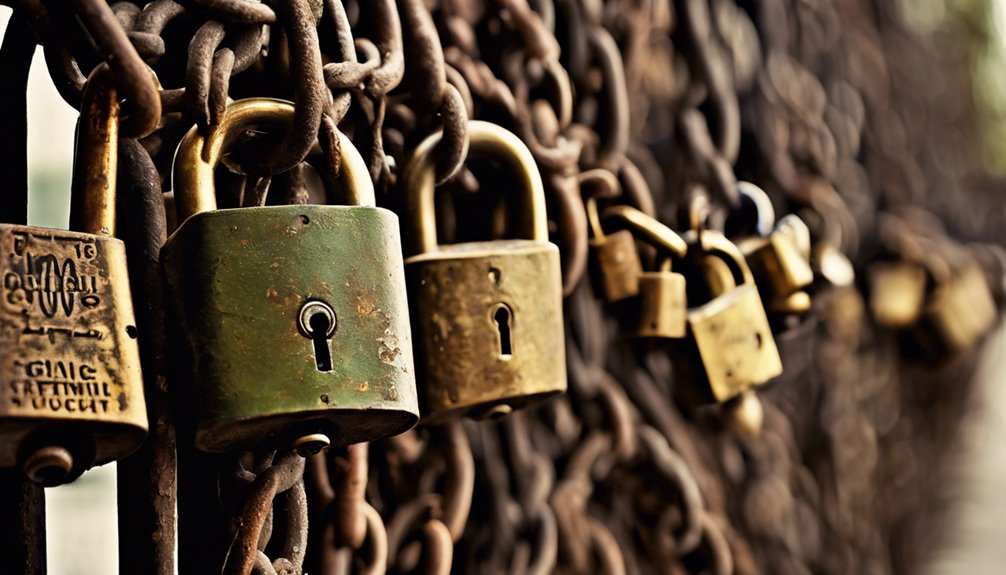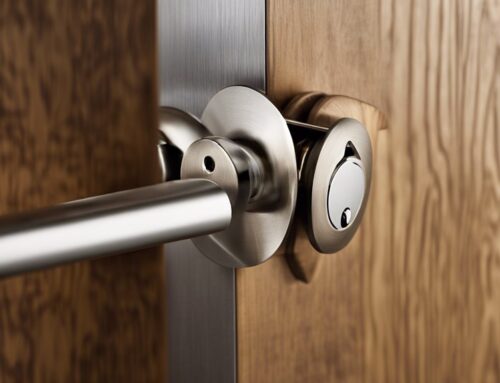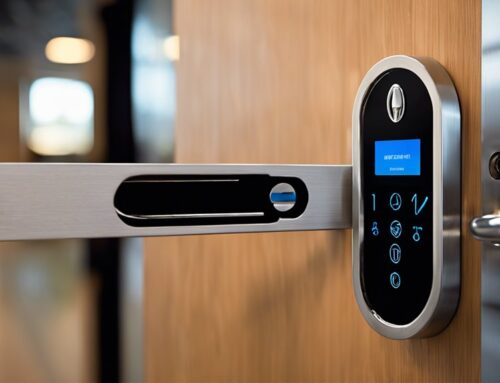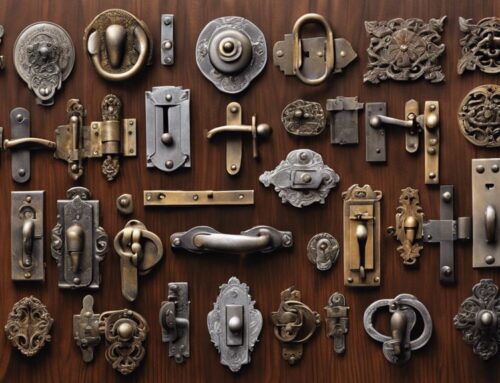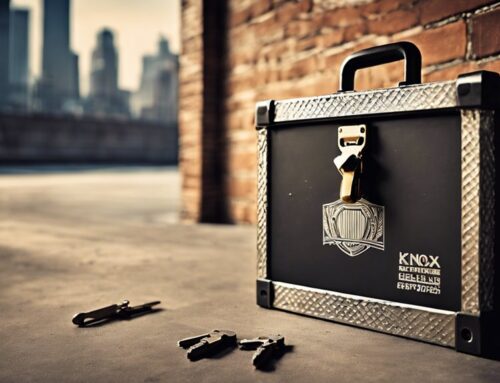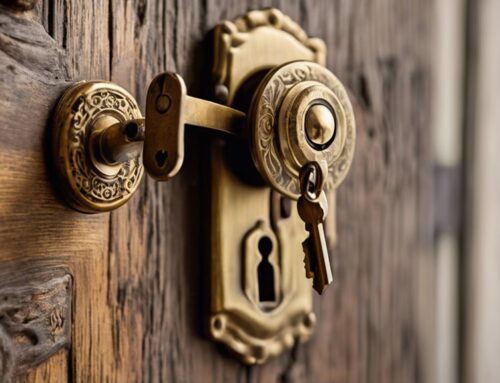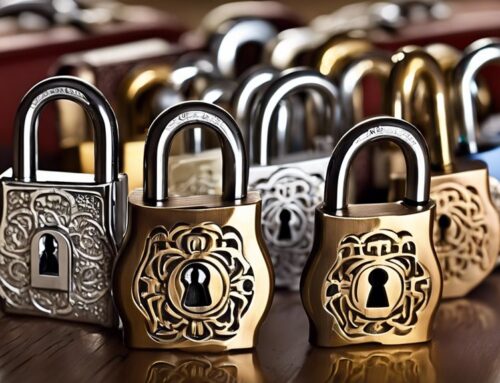You might think of padlocks as simple devices for securing your belongings, but their journey through history tells a much richer story. Starting from ancient Babylon, they’ve adapted alongside advancements in materials and design, evolving into sophisticated security solutions. As you explore their various mechanisms and the impact of industrialization, you’ll find there’s more at stake than just keeping items safe. What do these developments reveal about our changing needs for security, and how might the latest innovations redefine what it means to protect our possessions?
Key Takeaways
- Padlocks have evolved from wooden designs in ancient Babylon to robust options featuring advanced materials like hardened steel and titanium for durability.
- Key mechanisms like lock pins and tumblers, along with modern technology, enhance the security provided by padlocks against unauthorized access.
- The industrialization of padlock manufacturing improved accessibility and affordability, while advancements in metalworking increased durability and tampering resistance.
- Smart locks today integrate digital technology, allowing for keyless entry and remote monitoring, transforming traditional security methods into modern solutions.
- Historical trends illustrate padlocks’ adaptation, from ornate medieval styles for status to high-security options that meet contemporary safety demands.
Historical Evolution of Padlocks

While you might think of padlocks as a modern convenience, their origins trace back thousands of years. The earliest examples appeared in Babylon around 1,000 BC, crafted from wood and featuring crude mechanisms.
Ancient Egyptians refined this design, incorporating more sophisticated locking mechanisms that showcased advancements in metallurgy and craftsmanship. By the Roman era, padlocks morphed further, utilizing iron and developing complex key designs, demonstrating an evolution in security needs.
During the Middle Ages, padlocks became essential for safeguarding personal belongings, with ornate designs reflecting societal status. As industrialization progressed, mass production enhanced availability and variety.
Today, padlocks continue to symbolize security, adapting to modern technologies while retaining historical significance. Understanding this evolution provides insight into their enduring importance in personal and property protection.
Materials That Enhance Durability

When selecting a padlock, the materials used play an essential role in determining its durability and effectiveness. The most reliable padlocks often feature hardened steel bodies, which resist cutting and sawing. High-quality padlocks, similar to high-security locks, provide enhanced protection against unauthorized access.
Stainless steel offers excellent corrosion resistance, making it ideal for outdoor usage. Additionally, reinforced plastic or composite materials can provide lightweight options without sacrificing strength, appealing for portable security needs.
Moreover, look for brass components, which prevent rust and wear in internal mechanisms. The shackle material also greatly impacts durability; consider boron-carbide or titanium for maximum resistance against tampering. Investing in high-quality locks is a worthwhile decision as they provide better security and longevity compared to cheaper alternatives.
Mechanisms Behind Lock Functionality

The durability of a padlock not only relies on its materials but also on the intricate mechanisms that govern its functionality. Understanding these mechanisms is essential for anyone looking to master lock security. Each lock mechanism typically incorporates lock pins and tumblers, which play a crucial role in the lock’s ability to secure valuables against unauthorized access. High-security locks often use high-security lock pins to provide superior protection against picking techniques.
| Mechanism Type | Description |
|---|---|
| Cylinder Lock | Uses a key to align pins for releasing |
| Disc Detainer | Employs rotating discs to permit access |
| Tubular Lock | Features a cylinder that accepts tubular keys |
| Electronic Lock | Utilizes digital codes for security |
| Smart Lock | Integrates with smartphones for access |
Each mechanism has unique security features, ensuring that padlocks serve as effective barriers. By delving into these functionalities, you’ll appreciate the precision required for maintaining robust security.
Impact of Industrialization

As industrialization progressed, it considerably transformed the landscape of security measures, including padlocks. The rise of mass production techniques enabled manufacturers to create padlocks more efficiently and at lower costs. You benefitted from increased availability, fostering a competitive market that led to innovation in design and materials. The shift to metalworking techniques enhanced durability and strength, making locks more resistant to tampering. Furthermore, the expansion of urban environments necessitated heightened security, driving demand for better lock systems in homes and businesses. This era also saw the emergence of standardized key systems, simplifying access control. Additionally, advancements in technology led to the development of high-security locks, which offer superior protection against unauthorized access and tampering. As a result, many households and businesses began to adopt these locks as a standard security measure to safeguard their properties.
Modern Innovations in Security
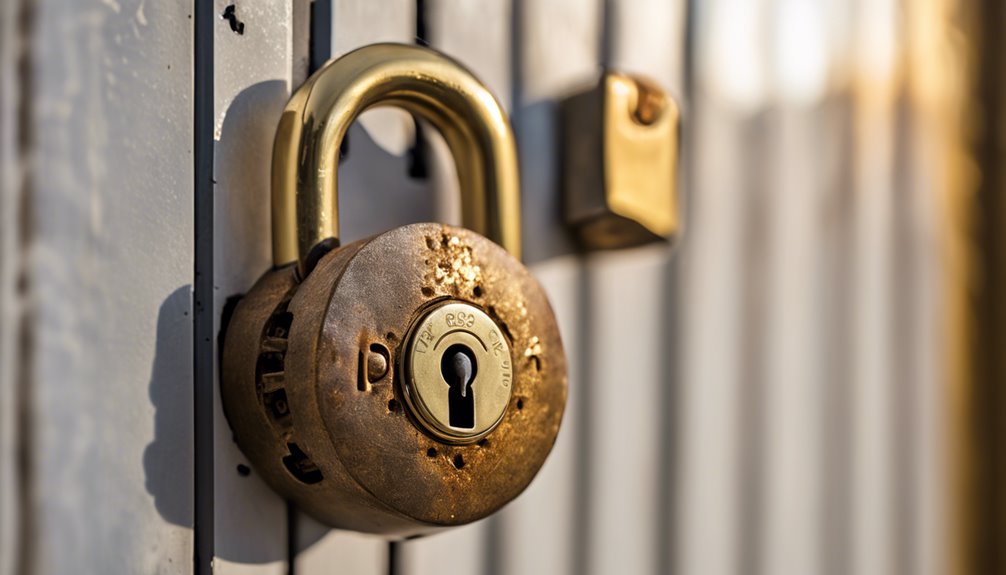
While traditional padlocks have remained reliable security tools, modern innovations have revolutionized the way we think about locking mechanisms.
You’ll find that today’s advancements blend convenience with enhanced security features, meeting the demands of a rapidly evolving landscape.
- Smart Locks: These connect to your smartphone or smart home system, offering keyless entry and tracking capabilities. They typically boast robust encryption, such as AES 128-bit encryption, to safeguard against unauthorized access.
- Biometric Locks: Utilizing fingerprint or facial recognition, they provide unparalleled security tailored to individual users.
- Remote Monitoring: Many padlocks now allow for real-time alerts and monitoring, enabling owners to stay in control, no matter where they are. These innovations empower you to choose solutions that align with your security needs, effectively blending traditional reliability with cutting-edge technology. In addition to the convenience they provide, smart locks also offer improved tracking capabilities, which can enhance overall security for users.
Frequently Asked Questions
How Do I Choose the Right Padlock for My Needs?
To choose the right padlock for your needs, first assess your security requirements.
Consider factors like the environment—indoor versus outdoor—and the level of security needed.
Evaluate the lock’s material and durability, opting for hardened steel for tough weather.
Check the locking mechanism; a combination or key lock can suit different preferences.
Finally, review user ratings and reliability, ensuring the padlock you select provides the protection you seek without compromising convenience.
Can a Padlock Be Rekeyed or Repaired?
Yes, a padlock can often be rekeyed or repaired, which is a great option for maintaining security without replacing the entire lock.
Curiously, about 60% of padlock users are unaware of this possibility.
When you rekey a padlock, you change the internal mechanisms so old keys won’t work anymore.
Repairing can also extend the lifespan of your padlock.
Make certain you consult a professional locksmith for the best results and proper techniques.
What Is the Average Lifespan of a Padlock?
The average lifespan of a padlock typically ranges from 5 to 10 years, depending on materials, usage, and exposure to elements.
For instance, stainless steel locks often outlast those made of zinc alloy.
Regular maintenance can extend their life, while neglect might lead to rust or internal wear.
Evaluate your lock periodically and replace it if you notice any signs of deterioration to guarantee peak security for your belongings.
Are There Padlocks Resistant to Picking?
Absolutely, some padlocks are specifically designed to resist picking.
For instance, high-security locks like those from Medeco or ABUS often incorporate complex internal mechanisms that make them incredibly difficult to pick.
In fact, statistics show that standard locks can be picked in less than a minute, while high-security options can take over an hour, if successful at all.
How Do I Maintain My Padlock for Longevity?
To maintain your padlock’s longevity, regularly clean it with a cloth to remove dirt and moisture.
Lubricate the keyhole and shackle with graphite or silicone spray, avoiding oil-based products that can attract grime.
Inspect for rust or corrosion and replace any damaged parts promptly.
Store your padlock in a dry environment, and avoid exposure to extreme temperatures or harsh chemicals.
Conclusion
As you stand before a padlock, you might not realize it’s a symbol to centuries of innovation. From ancient Babylon’s rudimentary designs to today’s smart technology, each evolution reflects humanity’s relentless pursuit of security. The materials and mechanisms behind these locks showcase not just durability but adaptability. Coincidentally, every time you secure your belongings, you’re engaging with history, underscoring how padlocks have remained steadfast defenders against unauthorized access throughout the ages. Your safety’s legacy is literally within your grasp.

